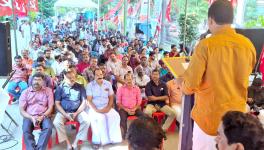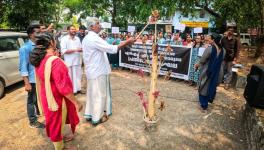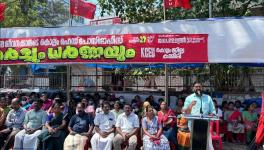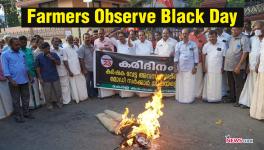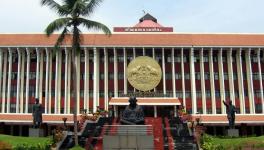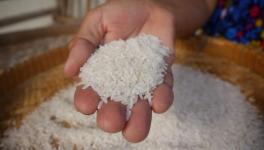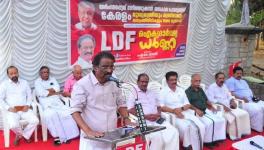Kerala Prepares Water Budget, Full Fledged Efforts to Revive and Rejuvenate Water Bodies
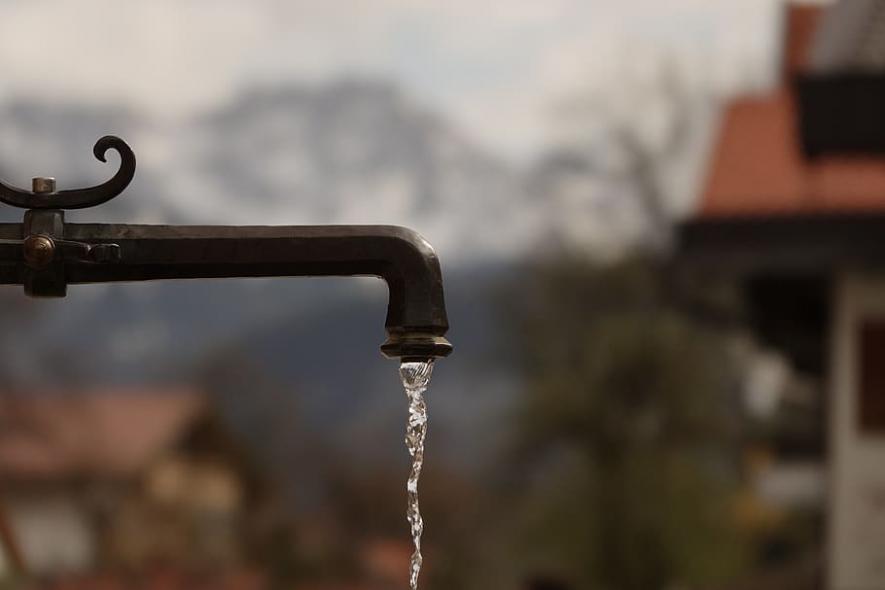
Representational Image. Image Courtesy: Pxfuel
The government of Kerala published the ‘Water Budget’ for 94 village panchayats spread across 15 block panchayats in the state on April 17, the first of its kind in the country. The state receives sufficient rainfall annually, more than the water required for public use, but water shortage is experienced in several parts of the state during the peak summer. The budget aims to quantify water availability for better utilisation to avoid shortage.
The budget has been prepared to effectively utilise and manage water to ensure water security, led by the local self-government institutions (LSGIs). The budget was prepared for the ‘water year’ (June to May) as 10 days as a unit to identify the water availability and requirement for better management precisely.
The ‘Green Kerala Mission’ has revived several rivers and irrigation canals to ensure water conservation ensures a better groundwater level to ensure the availability of water. The government of Kerala announced that the water budget would be prepared for all the local bodies within a stipulated time period.
FIRST IN THE COUNTRY TO PREPARE WATER BUDGET
The government announced that the LSGs would present the water budget on the ‘World Water Day’ observed on March 22 every year. The budget was prepared for all village panchayats in one block panchayat in each of the districts.
The chief minister Pinarayi Vijayan published the water budgets prepared for 94 village panchayats in 15 block panchayats, one more than the initial announcement in Thiruvananthapuram.
While addressing the event, the CM highlighted the need to use available water. “We receive an average of 300 ml of rain yearly, more than the requirement. But the studies suggest a reduction in water availability, though the availability in the state is three times higher than the national average”, he said.
The Haritha (Green) Keralam Mission was launched in 2016, along with the LSGs prepared the individual budgets for the village panchayats. The preparation was guided by a team of experts, including the Centre of Water Resource Development and water authority, technological expertise in mapping the water availability and demand.
“The recent challenges are due to the reducing paddy fields and water bodies. Rejuvenating these natural bodies is crucial to ensure a consistent water table. The budget will pave the way to achieve this”, Pinarayi Vijayan said.
‘BUDGET TO QUANTIFY AND MANAGE’
The thought of a water budget in Kerala was conceived almost half a decade ago since water storage has been a continuous challenge. The Haritha Keralam Mission informs that the rainwater drains into the sea within 49 to 72 hours. The mission identified the need to improve the storage and foraged into work.
Speaking to NewsClick, Dr Sunny George, limnologist and director of SCSM Water Institute, opined that managing water availability would be crucial in ensuring water security.
“There is no clear water management system in place so far. We largely depend on monsoons. Scarcity is purely a managerial issue which needs a scientific approach. Considering the factors, the budget is a step forward to manage the problem,” Dr George said.
There has not been a study of the availability of water and utilisation for different needs, including a mechanism to check the quality of the water.
“The budget is similar to an audit which gives information on the demand and the supply. The supply from rain, groundwater and other forms and the supply to public utilisation, agriculture, education institutions, industry and other places needs to be understood perfectly,” Dr George said.
The demand and supply of water across LSG differ based on the topographic characters, resulting in varying patterns. Dr George expressed his concerns over the quality of the water available and the need to have an approach to study the quality before and after monsoons.
“The LSGs are more powerful in Kerala and should go for a water quality atlas. What they need is technology to achieve this. These bodies can have their own water policy,” he added.
REVIVAL AND REJUVENATION OF WATER BODIES
The state is enriched by 44 rivers, backwaters and water bodies as water sources. But, the state has lost a couple of rivers over time, shocking the water-rich state due to encroachment and dumping of waste, among other man-made errors. The Haritha Keralam Mission launched projects to revive rivers, water bodies and irrigation canals.
“Since the LDF government came to power, 15,119 km of irrigation canals have been revived. In the second phase, which ended in 2021, a total of 7,290 km of the canal was revived with the participation of 1,60,895 volunteers,” Pinarayin Vijayan said during his address.
‘Ini Njan Ozhikatte’ (Let me Flow Now) has retrieved hundreds of water bodies during the last couple of years, including Varattar and Kuttemperoor, with massive people participation. The government has been utilising the Mahatma Gandhi National Rural Employment Guarantee Act (MGNREGA) to revive the water bodies.
The government has also rolled out plans to satellite map the water canals in around 230 LSGs in 9 districts along the western ghats area.
Get the latest reports & analysis with people's perspective on Protests, movements & deep analytical videos, discussions of the current affairs in your Telegram app. Subscribe to NewsClick's Telegram channel & get Real-Time updates on stories, as they get published on our website.









